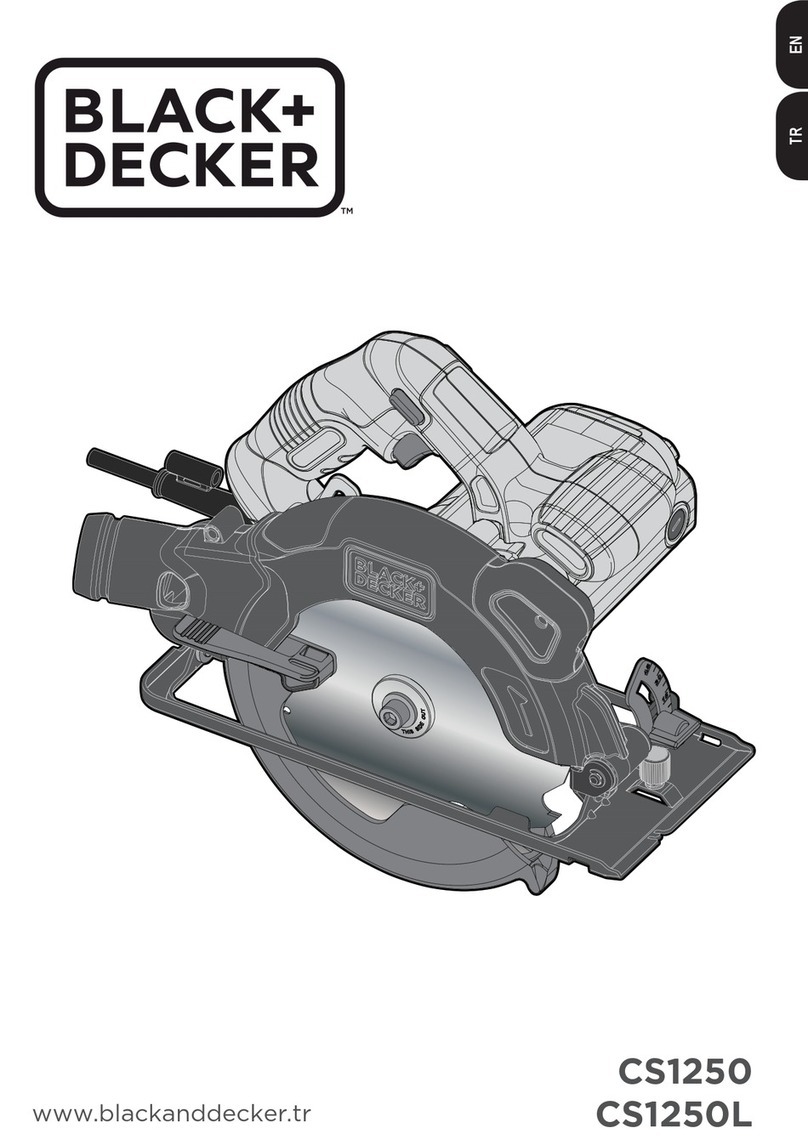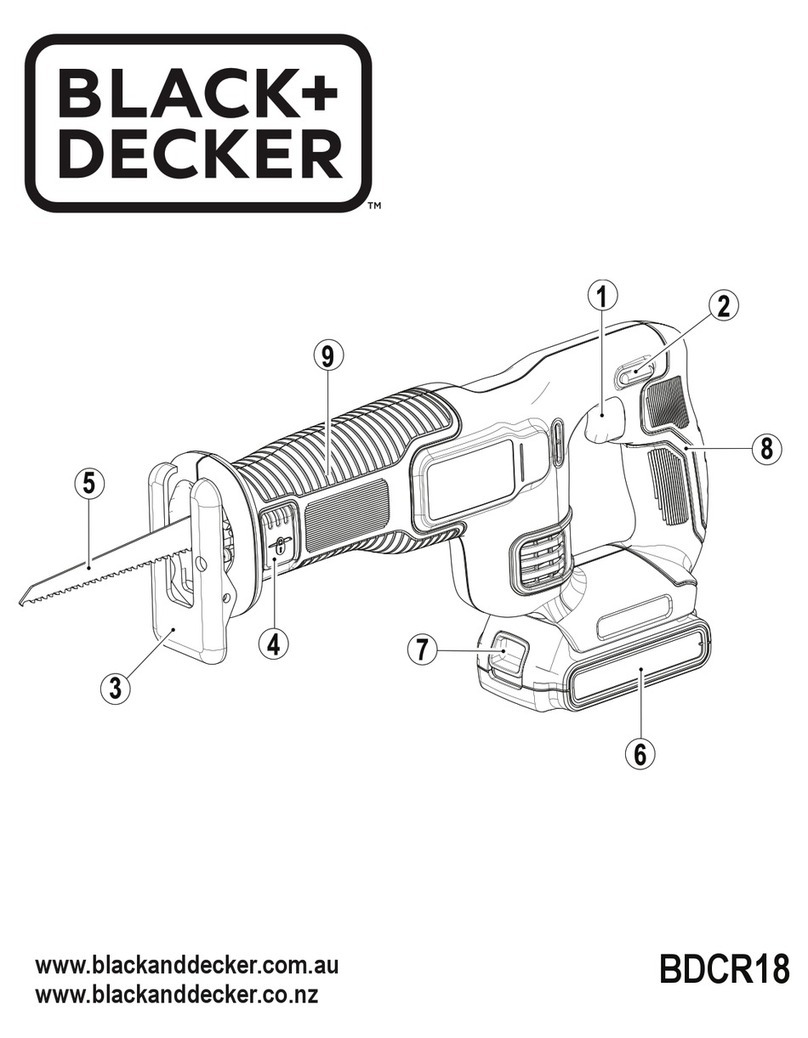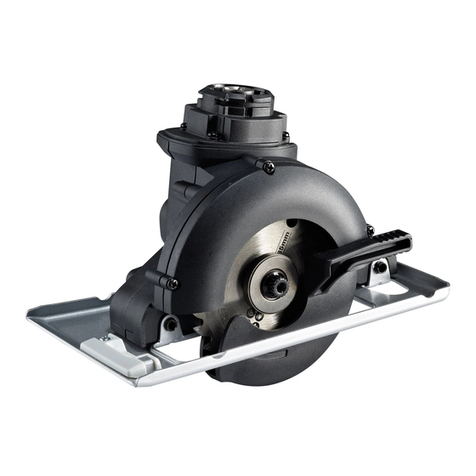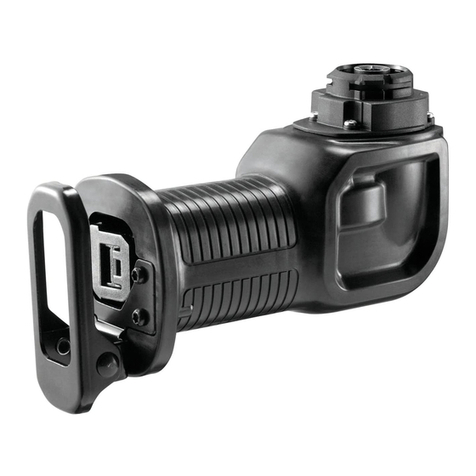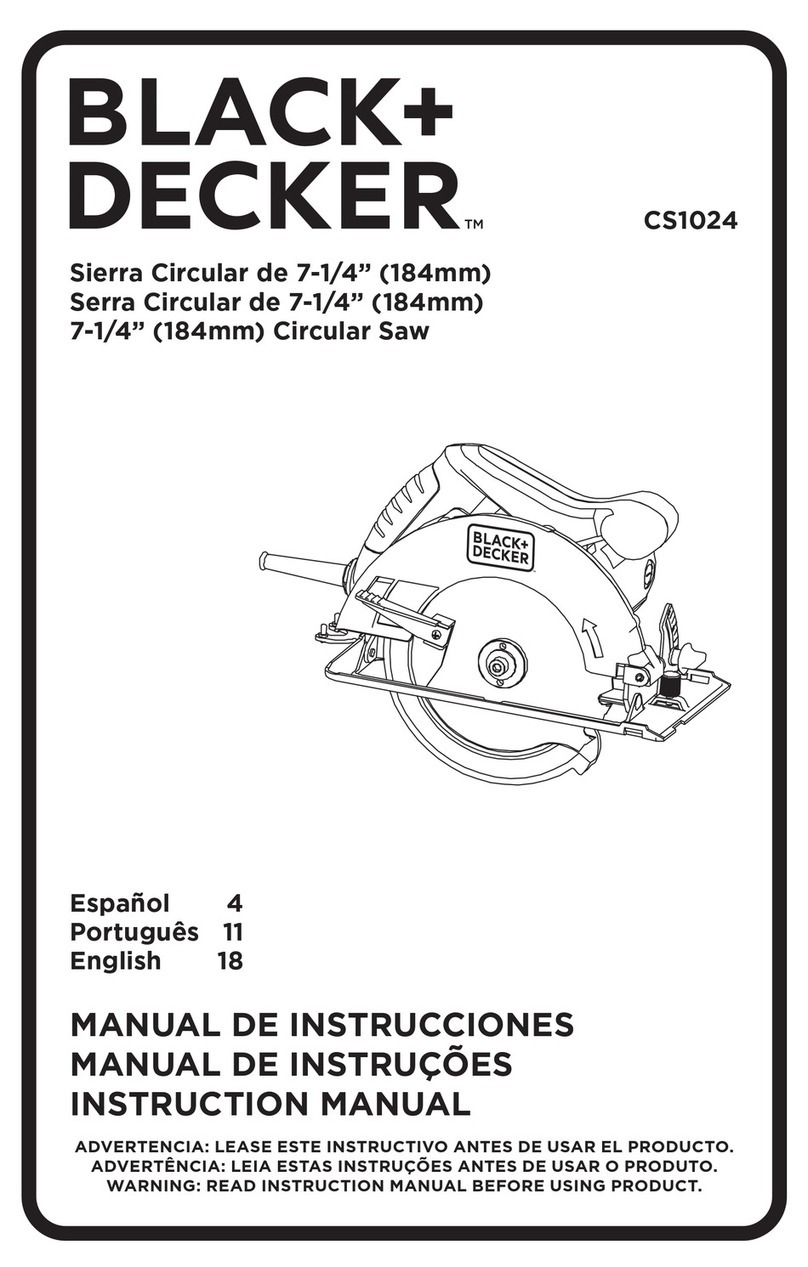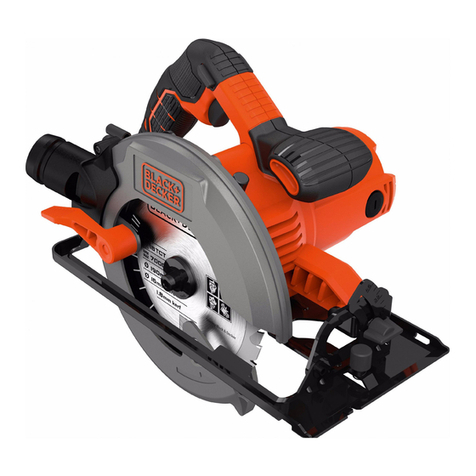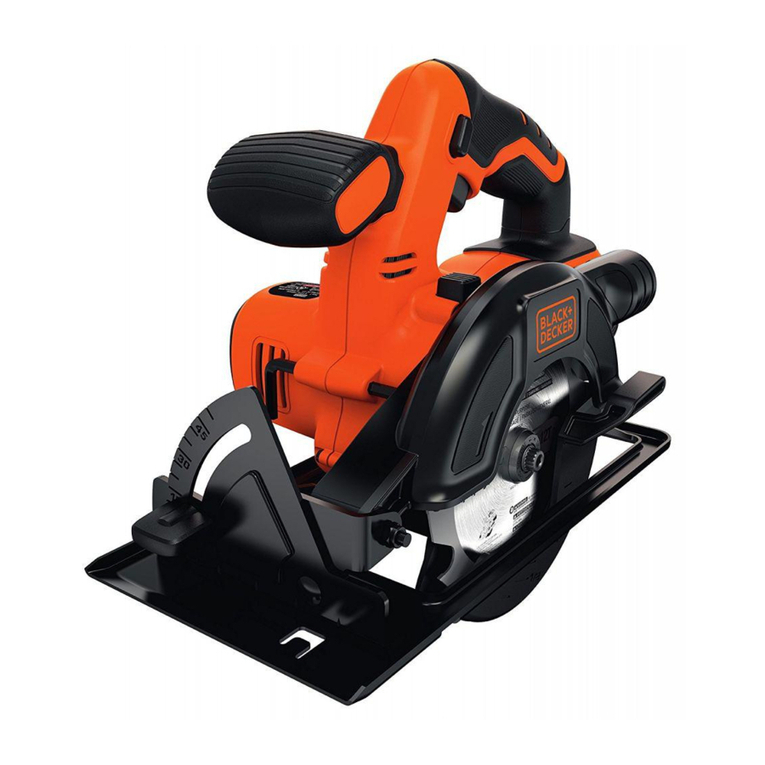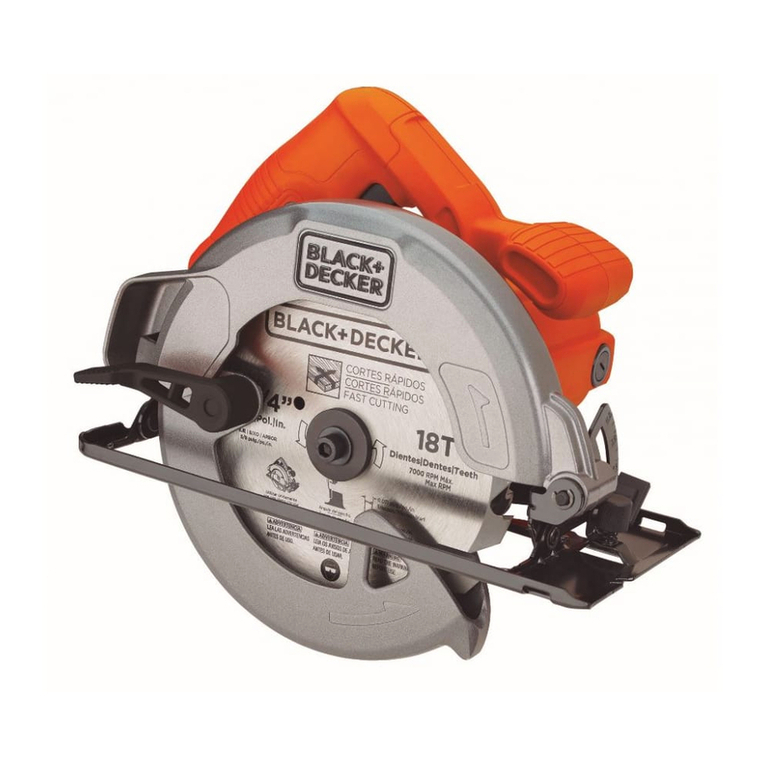
9
ENGLISH
(Original instructions)
f. Support large panels to minimise the risk of saw blade
pinching and kickback. Large panels tend to sag under
their own weight. Support(s) must be placed under all
portions of the panel overhanging the table top.
g. Use extra caution when cutting a workpiece that is
twisted, knotted, warped or does not have a straight
edge to guide it with a mitre gauge or along the fence.
A warped, knotted, or twisted workpiece is unstable and
causes misalignment of the kerf with the saw blade,
binding and kickback.
h. Never cut more than one workpiece, stacked vertically
or horizontally. The saw blade could pick up one or more
pieces and cause kickback.
i. When restarting the saw with the saw blade in the
workpiece, centre the saw blade in the kerf so that the
saw teeth are not engaged in the material. If the saw
blade binds, it may lift up the workpiece and cause
kickback when the saw is restarted.
i. Keepsawbladesclean,sharp,andwithsufcientset.
Never use warped saw blades or saw blades with
cracked or broken teeth. Sharp and properly set saw
blades minimise binding, stalling and kickback.
4. Table saw operating procedure warnings
a. Turn off the table saw and disconnect the power cord
when removing the table insert, changing the saw
blade or making adjustments to the riving knife or saw
blade guard, and when the machine is left unattended.
Precautionary measures will avoid accidents.
b. Never leave the table saw running unattended. Turn it
off and don't leave the tool until it comes to a
complete stop. An unattended running saw is an
uncontrolled hazard.
c. Locate the table saw in a well-lit and level area where
you can maintain good footing and balance. It should
be installed in an area that provides enough room to
easily handle the size of your workpiece. Cramped,
dark areas, and uneven slippery oors invite accidents.
d. Frequentlycleanandremovesawdustfromunderthe
saw table and/or the dust collection device.
Accumulated sawdust is combustible and may self-ignite.
e. The table saw must be secured. A table saw that is not
properly secured may move or tip over.
f. Remove tools, wood scraps, etc. from the table before
the table saw is turned on. Distraction or a potential jam
can be dangerous.
g. Always use saw blades with correct size and shape
(diamond versus round) of arbour holes. Saw blades
that do not match the mounting hardware of the saw will
run off-centre, causing loss of control.
h. Never use damaged or incorrect saw blade mounting
meanssuchasanges,sawbladewashers,boltsor
nuts.
These mounting means were specially designed for your
saw, for safe operation and optimum performance.
i. Never stand on the table saw, do not use it as a
stepping stool. Serious injury could occur if the tool is
tipped or if the cutting tool is accidentally contacted.
j. Make sure that the saw blade is installed to rotate in
the proper direction. Do not use grinding wheels, wire
brushes, or abrasive wheels on a table saw. Improper
saw blade installation or use of accessories not
recommended may cause serious injury.
Additional safety instructions for table saws
uThe intended use is described in this instruction manual.
The use of any accessory or attachment or performance
of any operation with this tool other than those recom-
mended in this instruction manual may present a risk of
personal injury and/or damage to property.
uDo not use cracked/bent/damaged/deformed saw blades.
uDo not use blades of larger or smaller diameter than
recommended. For the proper blade rating refer to the
technical data.
@Warning! Contact with or inhalation of dusts
arising from sawing applications may endanger
the health of the operator and possible bystanders. Wear a
dust mask specically designed for protection against dust
and fumes and ensure that persons within or entering the
work area are also protected.
uDo not work with material containing asbestos. Asbestos
is considered to be carcinogenic.
uWear gloves when handling saw blades and rough
material (saw blades should be carried in a holder when
practicable).
uWear hearing protection to reduce the risk of induced
hearing loss.
uConsider using specially designed noise-reduction blades.
uWear eye protection to reduce the risk of personal injury.
uUse the dust bag provided when sawing wood.
uSelect the correct blade for the material to be cut.
uDo not operate the machine without the guard in position.
Do not operate the machine if the guard does not function
or is not maintained properly.
uBefore each cut ensure that the machine is stable.
uKeep handles dry, clean and free from oil and grease.
uKeep the surrounding area of the machine well maintained
and free of loose materials, e.g. chips and off-cuts.
uEnsure the machine and the work area are provided with
adequate general or localised lighting.
uDo not allow untrained people to operate this machine.
uEnsure that the blade is mounted correctly before use.
Make sure that the blade rotates in the correct direction.
Keep the blade sharp. Follow instruction for lubricating
and changing accessories.
